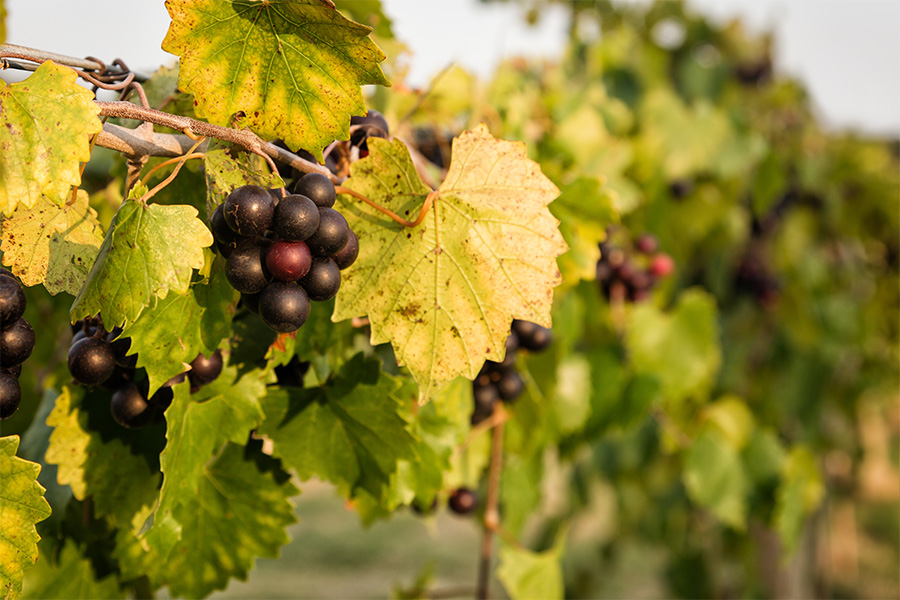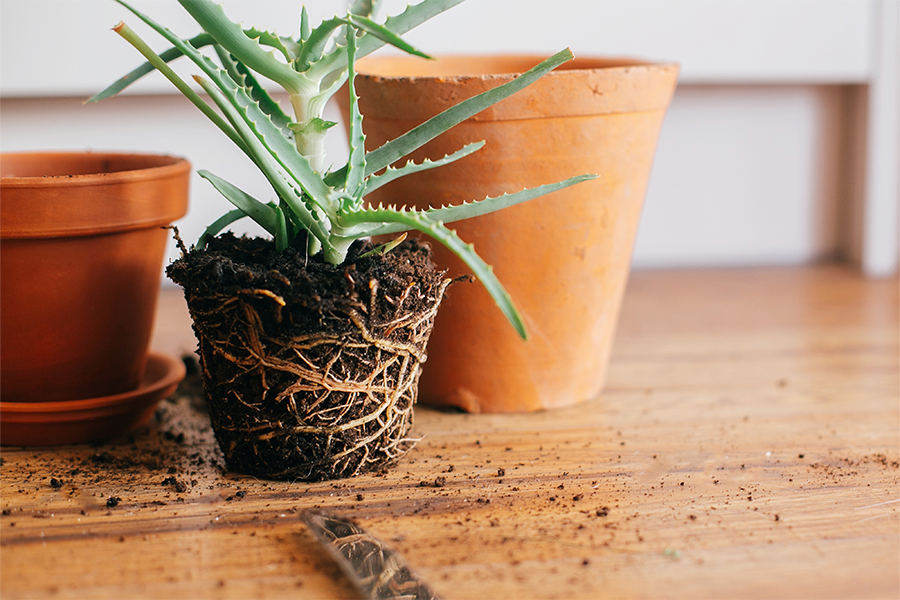Horticulture
-

C 1151
Viticulture Management
This phenology-based viticulture management poster provides a reference for sound viticultural, disease, and insect management practices in a digestible format. Viticultural practices optimize vineyard health, profitability, and sustainability and improve crop quantity and quality. Like pest management, viticultural practices should be implemented in a timely fashion throughout the growing season to maximize practice efficiency and benefit gain. Disease control in grapes is critical, as grapes are susceptible to a wide range of pathogens. Implementing timely and adequate cultural practices will greatly help to suppress diseases.
Phillip M. Brannen and Brett R Blaauw
|
-

C 1151-SP
Manejo del Viñedo
Este póster del manejo del viñedo está basado en la fenología de la planta y proporciona una referencia para las buenas prácticas de manejo de las enfermedades y los insectos de la vid en un formato atractivo y digerible. Las prácticas vitícolas optimizan la salud, la rentabilidad y la sostenibilidad de los viñedos al mismo tiempo que mejoran la cantidad y calidad del cultivo. Al igual que el manejo de plagas, las prácticas vitivinícolas deben implementarse de manera oportuna a lo largo de la temporada de crecimiento de la planta para maximizar la eficiencia de la práctica y la ganancia de beneficios. El control de enfermedades en las uvas es crítico, ya que las uvas son susceptibles a una amplia gama de patógenos. La implementación de prácticas culturales oportunas y adecuadas ayudará enormemente a eliminar las enfermedades. Además, las uvas, más que muchos productos hortícolas, requieren programas de fungicidas agresivos durante todo el año para mantener la salud de la vid. El manejo integrado de plagas en el viñedo combina una variedad de técnicas y herramientas para controlar las plagas. Comienza identificando correctamente al insecto y comprendiendo su tiempo y actividad dentro de un cultivo a lo largo de la temporada. El monitoreo y la evaluación de la abundancia de plagas identificadas y las lesiones en los cultivos pueden ayudar a determinar el método correcto para el manejo efectivo de la plaga.
Phillip M. Brannen and Brett R Blaauw
|
-

C 1268
Pruning Muscadine Grapes
Many gardeners don’t realize how vigorously muscadines and grapes must be pruned each season in order to ensure good production. Quality equipment and care also is essential to maintain healthy plants. This video covers the basics of how to properly prune muscadines and bunch grapes. Correct pruning methods are essential for strong fruit production and must be performed annually at the proper time. This video covers timing, tools, and techniques.
Bob Westerfield
|
-

C 1240
Repotting Basics
This publication describes the reasoning behind repotting, as well as container selection, drainage, positioning the plant on an appropriate soil base, examining and attending to root issues, potential root removal and/or redistribution, backfilling, protecting, and watering the plant upon completion of repotting.
As container plants mature, their biomass increases and the roots grow outward and down to collect more water and nutrients. Most container plants tend to become root-bound and dry out quicker than their in-ground counterparts, and these conditions can cause a variety of issues, and lead to stunted growth and poor plant health. To prevent this from happening, it is important to make sure the root system is well dispersed in a healthy soil volume provided by an adequately sized container.
Bodie V. Pennisi
|
-

Well-groomed landscapes are often a result of considerable effort by landscape companies. Employees make them happen with routine care and, above all, attention to detail. A quality landscape and the image employees present on the job speak highly of the professionalism of the firm. Quality control (QC) is everyone’s responsibility and an essential part of a landscaper’s job. This publication describes the basics of creating and implementing a successful quality control program for your landscaping company.
Willie O. Chance III and Bodie V. Pennisi
|
-

Landscape professionals must consider many factors when choosing the right flowering annuals to plant for a particular location. Primary considerations include high visual impact, consistent bloom for color, foliage for texture and color, sun exposure, growth habit and low-water tolerance. Cost plays an important role as well. Many landscapers typically choose common annual ornamentals and tropical perennials marketed as annuals. Particular species and cultivars tend to be favored over others for a variety of reasons; these are the bread-and-butter plants, such as cool-season pansies and warm-season petunias. Because of this, staple plants tend to be planted year after year, often in the same bed – a recipe for disease build-up, pesticide applications, loss of plants, plant replacement, dissatisfied customers, and ultimately, lower profit margins. This publication explains how to effectively use crop rotation and cultural practices to reduce disease incidence in seasonal color beds.
Jean Williams-Woodward and Bodie V. Pennisi
|
-

This publication explains the different sources of salt in the soil, the effects of high salt and salinity in plants, measurements of salinity in soils and water, and a list of salt-tolerant native trees alongside their ability to withstand high salinity.
The information in this bulletin was requested by the green industry, county faculty, and the public.
John M. Ruter and Bodie V. Pennisi
|
-

Shoot thinning is the first seasonal canopy management practice in wine grape vineyards, but shoot thinning is not implemented in muscadine vineyards. Failure to shoot thin results in a highly congested canopy characterized by reduced air flow, high humidity, and extended damp periods. Muscadines can generally tolerate such conditions without adverse effects. Wine grapes grown in crowded fruit zones, however, will experience excessive disease incidence and severity—especially in the humid Southeastern U.S. Shoot thinning is therefore a necessary canopy management practice in wine grape vineyards in Georgia and other Southeastern states.
Timothy Coolong and Cain Hickey
|
-

Deciduous fruit plants common to Georgia must be propagated asexually because they do not come true to seed. This makes it necessary to reproduce the desired fruit plants by methods such as cuttings, runners, layering, budding or grafting. This publication discusses the common techniques used to asexually propagate fruit plants adapted to Georgia.
Gerard W. Krewer and Bob Westerfield
|